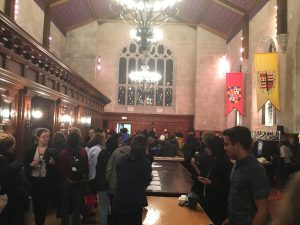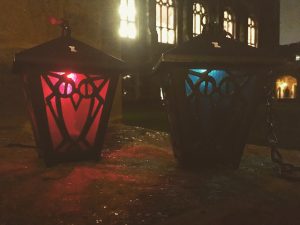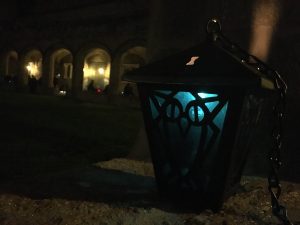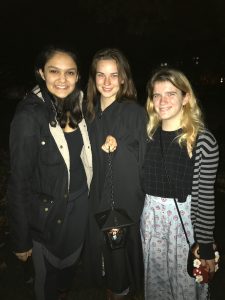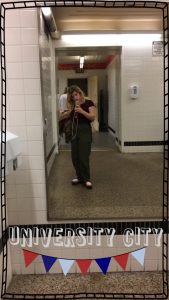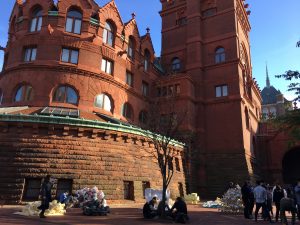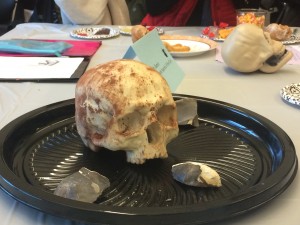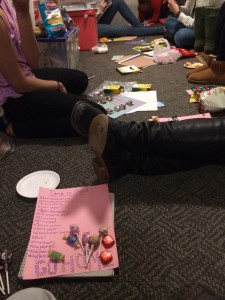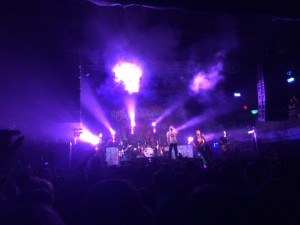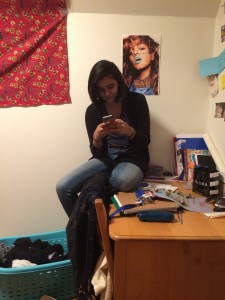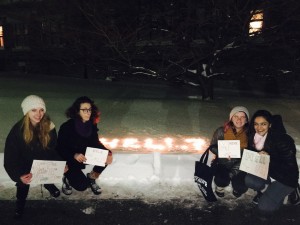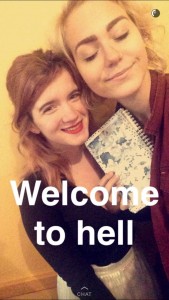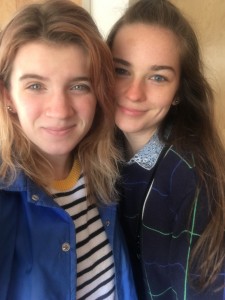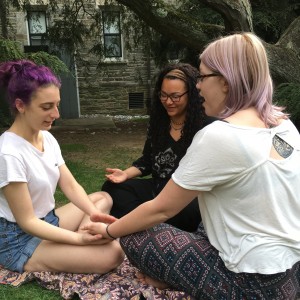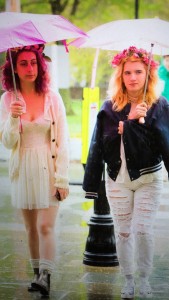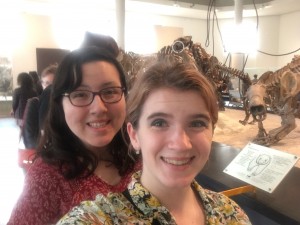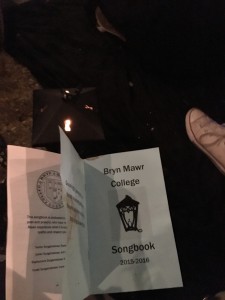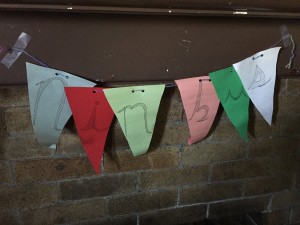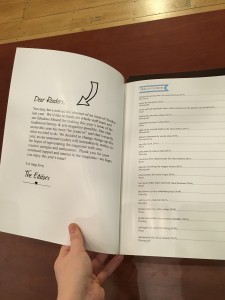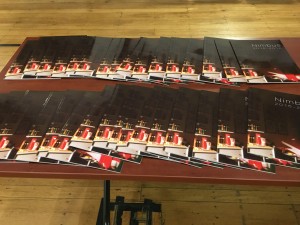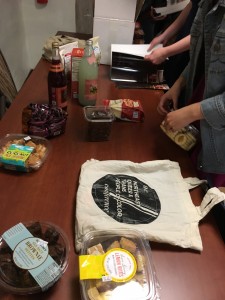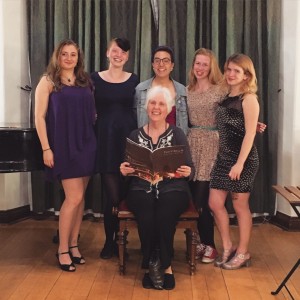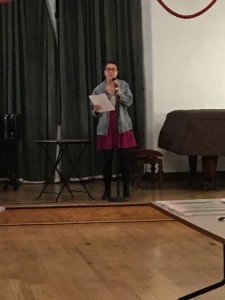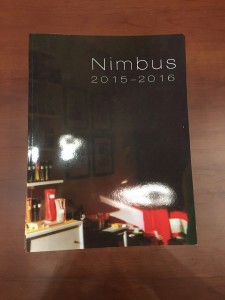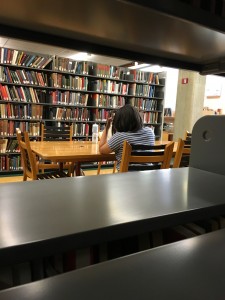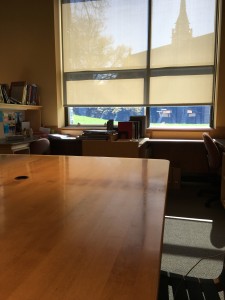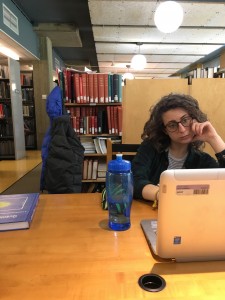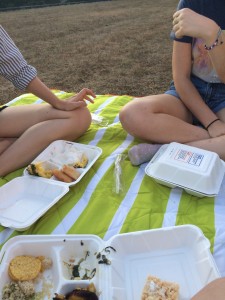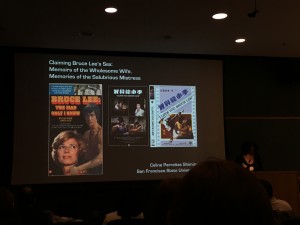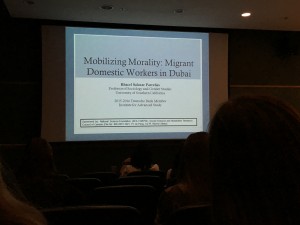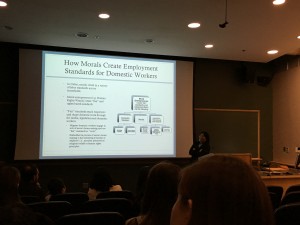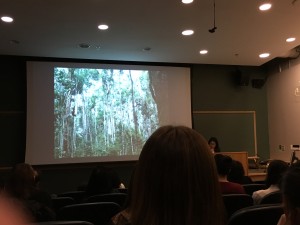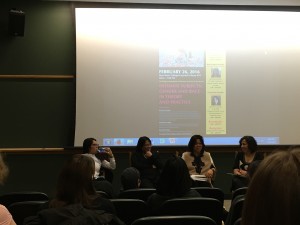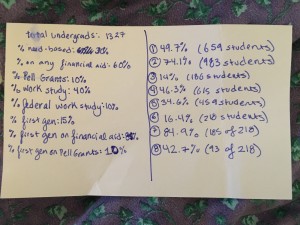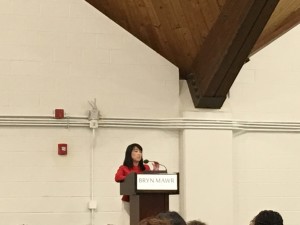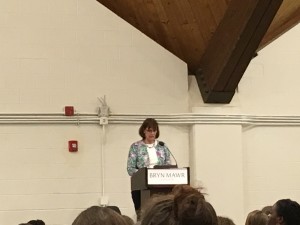The other day, the Bryn Mawr College twitter account tweeted a question for mawrtyrs to consider: “when was the first moment that you knew you’d made the right choice in coming to Bryn Mawr?” As I pondered the question, a number of lovely memories popped into my head. Would I say it was at the admitted student’s day in the spring, when my host student brought me to meet her roommate and I discovered the roommate was a friend of mine from camp? Or maybe when my dean knew who I was when I first walked into her office, because she’d remembered reading my application essay and had a class written down that she thought I’d like (it was costume design, and my essay was about being the head of costuming for my high school theatre productions)? Or was it when I walked into introduction to biological anthropology and anthropological archaeology, my first class of the school year, and saw that the classroom was filled with photographs of the women scientists who had preceded me at this institution? All of those moments stand out to me as times I knew I’d made the right choice–though of course each of the traditions I went to also solidified my certainty–but there was another memory that I knew really held the key.
During the first month or so of my freshman year, my customs people, Gabby and Angela (who is also a banter blogger!), organized what they called a “deep tea.” Their customs people had done the same for them, and they wanted to pass on the experience. I should note that this year, students have stopped referring to meetings and such as teas in light of racist connotations of the word (in the past, African-American students were apparently expected to serve the tea to their white counterparts, which is absolutely not something any of us now would want to condone), preferring “hall hangouts,” “receptions,” and other, clearer terms. Unlike most other Bryn Mawr meetings, though, we were actually drinking tea as part of our main activity, so I’ll continue to refer to this event as a “deep tea” for the remainder of this blog post.
The deep tea was a bonding experience for our customs group, an elaborate icebreaker that got us all to open up to each other. Gabby and Angela had put a bunch of questions in a mug, ranging from things like “talk about your happiest memory” and “what’s your favorite TV show?” to things like “what are you afraid of?” and “how do you hope to change in college?” Everyone was allowed to answer as many or as few of the questions as they wanted, provided they were holding one of the rubber ducks that indicated they were in the speaking order. We all promised to keep the content of each other’s answers secret, in order to ensure that people felt comfortable sharing with the group. We talked about our prom outfits, parents, institutional and everyday racism, religion, our hopes and worries for college, and so much more. I think we depleted more than one box of tissues–by the end of the tea, almost everyone was crying or had cried (not all tears were sad tears, though). My friend Sohini spilled her tea on me while sitting down, which is actually kind of how we became friends!
It was a really emotional evening, but in the best possible way. With a customs group of 21 people plus the two customs people, the idea of bonding with each other had seemed intimidating at first. But the tea brought out everyone’s concerns and passions, and helped us find things we had in common with each other. I’d been nervous about sharing anything personal with such a large group of people, but I knew that everyone would follow the honor code and respect each other’s privacy. When I looked around the room at the end of the tea, I knew I’d found a group of people I’d always be able to rely on to understand me–not just the people in that room, though they were all of course important to me, but the larger Bryn Mawr community, for we only represented a cross-section. My customs people had created a trusting space, and I knew I’d always be able to talk to them about my problems. Because they’d also shared a lot of personal stories, the tea also helped me see them as friends rather than the kind of camp counselor role I’d been thinking of them as filling. Though I may not still see or talk to everyone in my customs group every day, I know that we all have each other’s backs, and I found some of my best friends in that room. That was how I knew Bryn Mawr was the right choice: it was full of incredible women from all kinds of backgrounds, each of whom wanted to make this community the best possible place to be.


